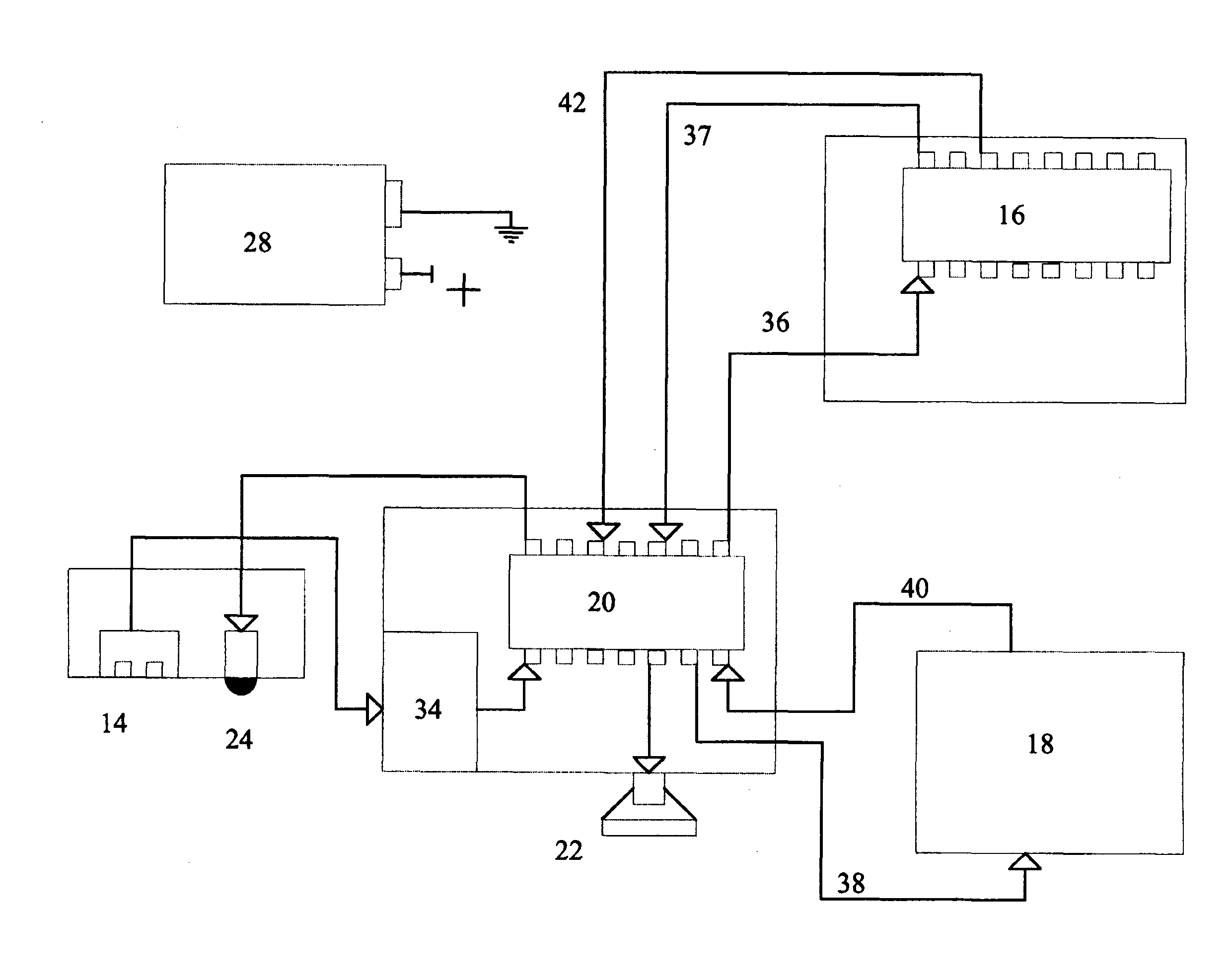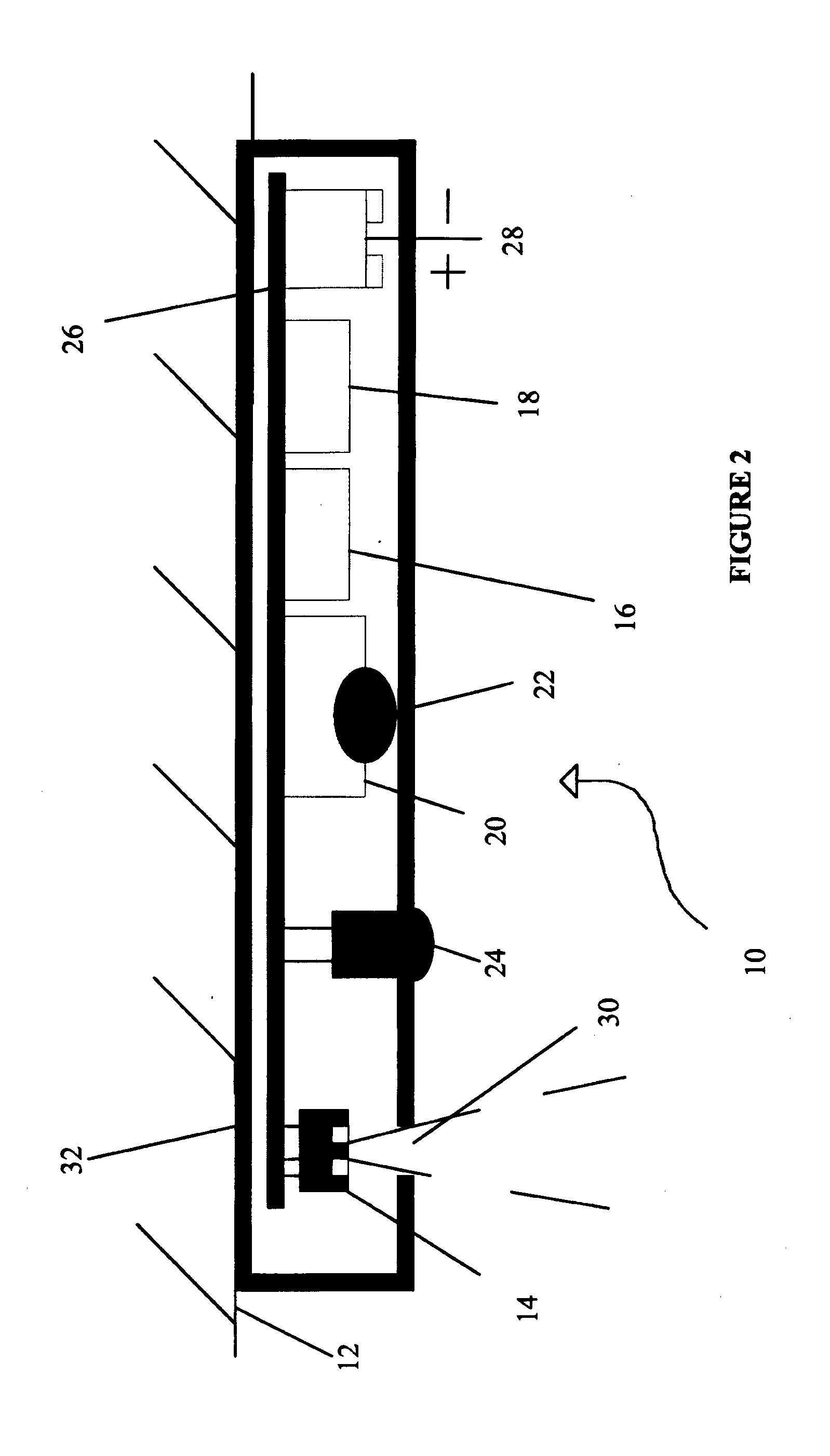Alarm device for alerting hazardous conditions
a hazardous condition and alarm device technology, applied in fire alarms, fire alarm smoke/gas actuation, instruments, etc., can solve the problems of nuisance alarms, inconvenience for occupants, and inconvenience for residents, and achieve the effect of reducing the service life of batteries
- Summary
- Abstract
- Description
- Claims
- Application Information
AI Technical Summary
Benefits of technology
Problems solved by technology
Method used
Image
Examples
Embodiment Construction
[0031]Referring to the drawings and initially to FIG. 1 there is illustrated in plan cut-away view an embodiment of the alarm device 10 according to the present invention. As shown, the device 10 is fixed to a ceiling 12 of a building. The device can be fixed to the ceiling by any fixing means.
[0032]The device 10 of this embodiment is for alerting occupants in the building in the event of fire. The device has a motion detection module 14 in the form of a passive infrared motion detector (PID), a primary sensing module 16 in the form of an ionization sensor, a secondary sensing module 18 which can be a photoelectric sensor or a carbon monoxide (CO) sensor, a controller 20 arranged to activate an audible alarm module 22 in the form of a horn on receiving an alarm signal from the sensors. The controller has a timer (not shown) and is arranged to be in a hush state for a preset time period (10 minutes for this embodiment) upon receiving a motion signal from the PID. In both the Normal S...
PUM
 Login to View More
Login to View More Abstract
Description
Claims
Application Information
 Login to View More
Login to View More - R&D
- Intellectual Property
- Life Sciences
- Materials
- Tech Scout
- Unparalleled Data Quality
- Higher Quality Content
- 60% Fewer Hallucinations
Browse by: Latest US Patents, China's latest patents, Technical Efficacy Thesaurus, Application Domain, Technology Topic, Popular Technical Reports.
© 2025 PatSnap. All rights reserved.Legal|Privacy policy|Modern Slavery Act Transparency Statement|Sitemap|About US| Contact US: help@patsnap.com



